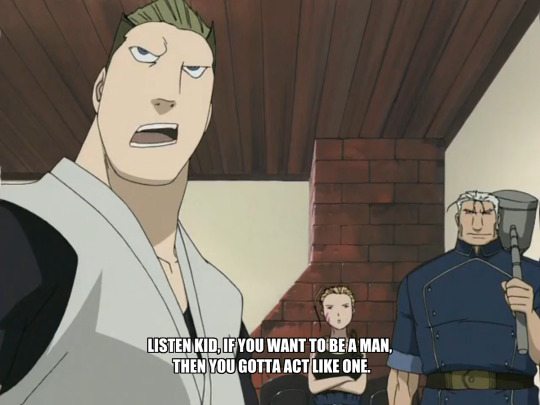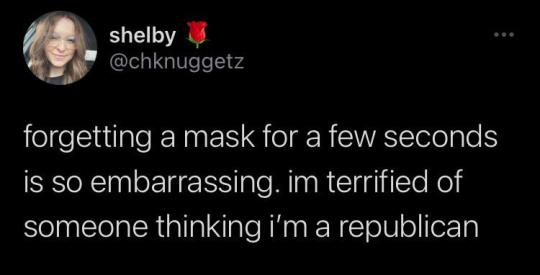Text
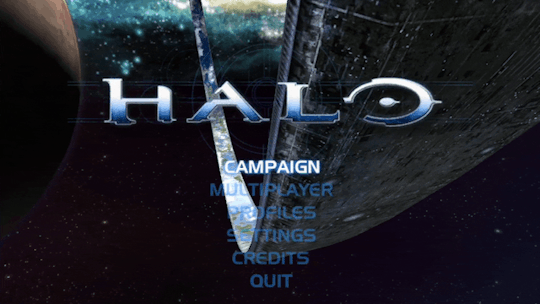


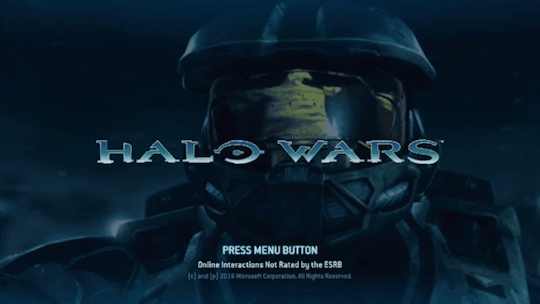
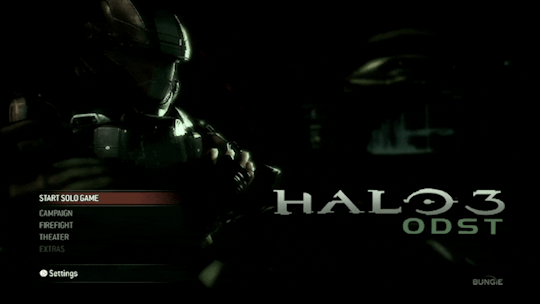




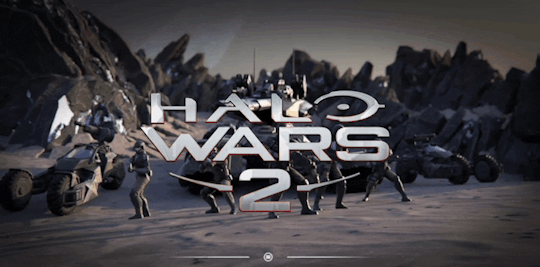
▶ = Press Start
When you firts saw Halo, were you blinded by its majesty? Whether for its characters, ist art style, the soundtrack, or the story and fiction told within our infinite space, hours of our lives invested in a saga so beautiful that although we are alone in the howling darkness it illuminates us with its great humanity in their stories. How many of us have not lost a Cortana in our lives?
A saga that has left a small but very deep mark on the gaming world 2001 - 2021 - And beyond...
1K notes
·
View notes
Text
“I can tell you a whole story with just five words.”
1K notes
·
View notes
Text
July Prompts 🪴
Word prompts to use for doodling or writing
summer kiss
cocktail
pineapple
vacation
camera
message in a bottle
lemonade stand
summer dress
beach
road trip
football game
airy
lifeguard
childhood
ice tea
sun screen
treasure hunt
pool party
fireflies
concert
succulents
pink skies
underwater
bubbles
flower field
hurricane
cherries
dancing in the rain
sun burn
rooftop
camping
3K notes
·
View notes
Text
June Prompts 🌼
Word prompts to use for doodling or writing
fairytale
garden hose
fruit stand
radio
block party
tattoo
ice cream
postcard
festival
skating
barefoot
night walks
pride
fries
stream
flower crown
outdoors
cocktail umbrellas
playing cards
sailboat
karaoke
dandelions
buttons
pearls
midsummer
universe
neon sign
dragonfly
birch tree
peaches
5K notes
·
View notes
Text
Story Structures for your Next WIP
hello, hello. this post will be mostly for my notes. this is something I need in to be reminded of for my business, but it can also be very useful and beneficial for you guys as well.
everything in life has structure and storytelling is no different, so let’s dive right in :)
First off let’s just review what a story structure is :
a story is the backbone of the story, the skeleton if you will. It hold the entire story together.
the structure in which you choose your story will effectively determine how you create drama and depending on the structure you choose it should help you align your story and sequence it with the conflict, climax, and resolution.
1. Freytag's Pyramid
this first story structure i will be talking about was named after 19th century German novelist and playwright.
it is a five point structure that is based off classical Greek tragedies such as Sophocles, Aeschylus and Euripedes.
Freytag's Pyramid structure consists of:
Introduction: the status quo has been established and an inciting incident occurs.
Rise or rising action: the protagonist will search and try to achieve their goal, heightening the stakes,
Climax: the protagonist can no longer go back, the point of no return if you will.
Return or fall: after the climax of the story, tension builds and the story inevitably heads towards...
Catastrophe: the main character has reached their lowest point and their greatest fears have come into fruition.
this structure is used less and less nowadays in modern storytelling mainly due to readers lack of appetite for tragic narratives.
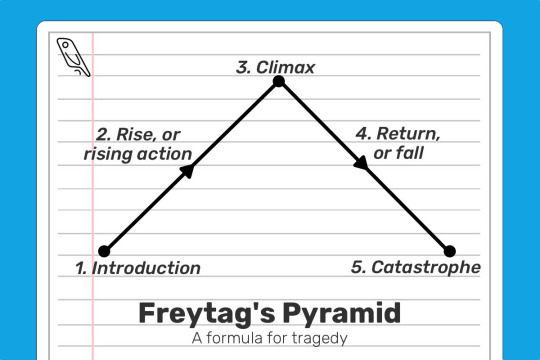
2. The Hero's Journey
the hero's journey is a very well known and popular form of storytelling.
it is very popular in modern stories such as Star Wars, and movies in the MCU.
although the hero's journey was inspired by Joseph Campbell's concept, a Disney executive Christopher Vogler has created a simplified version:
The Ordinary World: The hero's everyday routine and life is established.
The Call of Adventure: the inciting incident.
Refusal of the Call: the hero / protagonist is hesitant or reluctant to take on the challenges.
Meeting the Mentor: the hero meets someone who will help them and prepare them for the dangers ahead.
Crossing the First Threshold: first steps out of the comfort zone are taken.
Tests, Allie, Enemies: new challenges occur, and maybe new friends or enemies.
Approach to the Inmost Cave: hero approaches goal.
The Ordeal: the hero faces their biggest challenge.
Reward (Seizing the Sword): the hero manages to get ahold of what they were after.
The Road Back: they realize that their goal was not the final hurdle, but may have actually caused a bigger problem than before.
Resurrection: a final challenge, testing them on everything they've learned.
Return with the Elixir: after succeeding they return to their old life.
the hero's journey can be applied to any genre of fiction.

3. Three Act Structure:
this structure splits the story into the 'beginning, middle and end' but with in-depth components for each act.
Act 1: Setup:
exposition: the status quo or the ordinary life is established.
inciting incident: an event sets the whole story into motion.
plot point one: the main character decided to take on the challenge head on and she crosses the threshold and the story is now progressing forward.
Act 2: Confrontation:
rising action: the stakes are clearer and the hero has started to become familiar with the new world and begins to encounter enemies, allies and tests.
midpoint: an event that derails the protagonists mission.
plot point two: the hero is tested and fails, and begins to doubt themselves.
Act 3: Resolution:
pre-climax: the hero must chose between acting or failing.
climax: they fights against the antagonist or danger one last time, but will they succeed?
Denouement: loose ends are tied up and the reader discovers the consequences of the climax, and return to ordinary life.
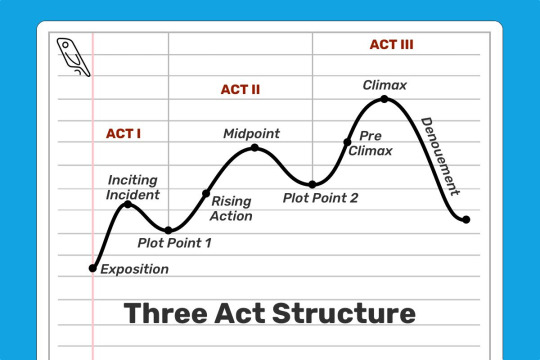
4. Dan Harmon's Story Circle
it surprised me to know the creator of Rick and Morty had their own variation of Campbell's hero's journey.
the benefit of Harmon's approach is that is focuses on the main character's arc.
it makes sense that he has such a successful structure, after all the show has multiple seasons, five or six seasons? i don't know not a fan of the show.
the character is in their comfort zone: also known as the status quo or ordinary life.
they want something: this is a longing and it can be brought forth by an inciting incident.
the character enters and unfamiliar situation: they must take action and do something new to pursue what they want.
adapt to it: of course there are challenges, there is struggle and begin to succeed.
they get what they want: often a false victory.
a heavy price is paid: a realization of what they wanted isn't what they needed.
back to the good old ways: they return to their familiar situation yet with a new truth.
having changed: was it for the better or worse?
i might actually make a operate post going more in depth about dan harmon's story circle.
5. Fichtean Curve:
the fichtean curve places the main character in a series of obstacles in order to achieve their goal.
this structure encourages writers to write a story packed with tension and mini-crises to keep the reader engaged.
The Rising Action
the story must start with an inciting indecent.
then a series of crisis arise.
there are often four crises.
2. The Climax:
3. Falling Action
this type of story telling structure goes very well with flash-back structured story as well as in theatre.
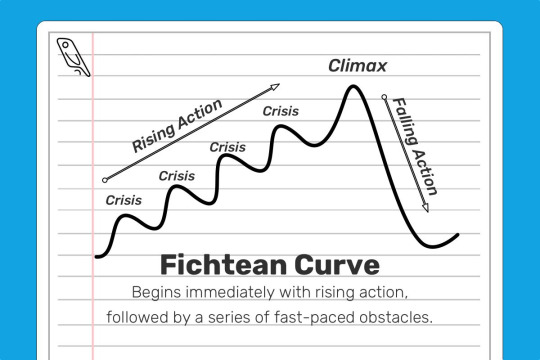
6. Save the Cat Beat Sheet:
this is another variation of a three act structure created by screenwriter Blake Snyder, and is praised widely by champion storytellers.
Structure for Save the Cat is as follows: (the numbers in the brackets are for the number of pages required, assuming you're writing a 110 page screenplay)
Opening Image [1]: The first shot of the film. If you’re starting a novel, this would be an opening paragraph or scene that sucks readers into the world of your story.
Set-up [1-10]. Establishing the ‘ordinary world’ of your protagonist. What does he want? What is he missing out on?
Theme Stated [5]. During the setup, hint at what your story is really about — the truth that your protagonist will discover by the end.
Catalyst [12]. The inciting incident!
Debate [12-25]. The hero refuses the call to adventure. He tries to avoid the conflict before they are forced into action.
Break into Two [25]. The protagonist makes an active choice and the journey begins in earnest.
B Story [30]. A subplot kicks in. Often romantic in nature, the protagonist’s subplot should serve to highlight the theme.
The Promise of the Premise [30-55]. Often called the ‘fun and games’ stage, this is usually a highly entertaining section where the writer delivers the goods. If you promised an exciting detective story, we’d see the detective in action. If you promised a goofy story of people falling in love, let’s go on some charmingly awkward dates.
Midpoint [55]. A plot twist occurs that ups the stakes and makes the hero’s goal harder to achieve — or makes them focus on a new, more important goal.
Bad Guys Close In [55-75]. The tension ratchets up. The hero’s obstacles become greater, his plan falls apart, and he is on the back foot.
All is Lost [75]. The hero hits rock bottom. He loses everything he’s gained so far, and things are looking bleak. The hero is overpowered by the villain; a mentor dies; our lovebirds have an argument and break up.
Dark Night of the Soul [75-85-ish]. Having just lost everything, the hero shambles around the city in a minor-key musical montage before discovering some “new information” that reveals exactly what he needs to do if he wants to take another crack at success. (This new information is often delivered through the B-Story)
Break into Three [85]. Armed with this new information, our protagonist decides to try once more!
Finale [85-110]. The hero confronts the antagonist or whatever the source of the primary conflict is. The truth that eluded him at the start of the story (established in step three and accentuated by the B Story) is now clear, allowing him to resolve their story.
Final Image [110]. A final moment or scene that crystallizes how the character has changed. It’s a reflection, in some way, of the opening image.
(all information regarding the save the cat beat sheet was copy and pasted directly from reedsy!)
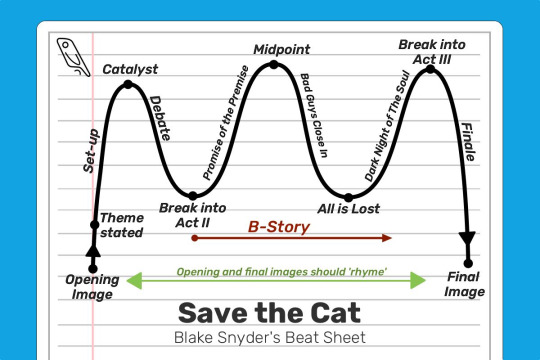
7. Seven Point Story Structure:
this structure encourages writers to start with the at the end, with the resolution, and work their way back to the starting point.
this structure is about dramatic changes from beginning to end
The Hook. Draw readers in by explaining the protagonist’s current situation. Their state of being at the beginning of the novel should be in direct contrast to what it will be at the end of the novel.
Plot Point 1. Whether it’s a person, an idea, an inciting incident, or something else — there should be a "Call to Adventure" of sorts that sets the narrative and character development in motion.
Pinch Point 1. Things can’t be all sunshine and roses for your protagonist. Something should go wrong here that applies pressure to the main character, forcing them to step up and solve the problem.
Midpoint. A “Turning Point” wherein the main character changes from a passive force to an active force in the story. Whatever the narrative’s main conflict is, the protagonist decides to start meeting it head-on.
Pinch Point 2. The second pinch point involves another blow to the protagonist — things go even more awry than they did during the first pinch point. This might involve the passing of a mentor, the failure of a plan, the reveal of a traitor, etc.
Plot Point 2. After the calamity of Pinch Point 2, the protagonist learns that they’ve actually had the key to solving the conflict the whole time.
Resolution. The story’s primary conflict is resolved — and the character goes through the final bit of development necessary to transform them from who they were at the start of the novel.
(all information regarding the seven point story structure was copy and pasted directly from reedsy!)

i decided to fit all of them in one post instead of making it a two part post.
i hope you all enjoy this post and feel free to comment or reblog which structure you use the most, or if you have your own you prefer to use! please share with me!
if you find this useful feel free to reblog on instagram and tag me at perpetualstories
Follow my tumblr and instagram for more writing and grammar tips and more!
13K notes
·
View notes
Text
I’M TRYING TO PROVE A POINT TO MY MOTHER!! HELP!!
So very rarely do i post but this is making me crazy!
My Mom Loves all things fantasy and S-Fi and and thinks it is so totally awesome that I am a Dungeon Master.
I have asked her multiple time if she wanted to play but she always comes up with some excuse to not play but will sit nearby fascinated by the game.
She finally admitted to me today that she thinks that at 57 she is “Too Old” to play even though she loves it.
PLEASE RE-BLOG THIS AS MANY TIME AS POSSIBLE TO HELP ME PROVE TO HER THAT SHE IS ALLOWED TO PLAY NO MATTER HER AGE!!!
4K notes
·
View notes
Photo
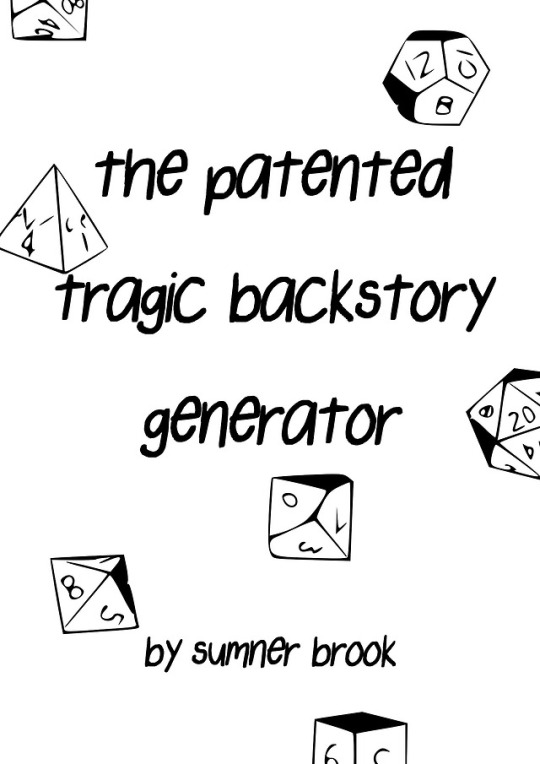

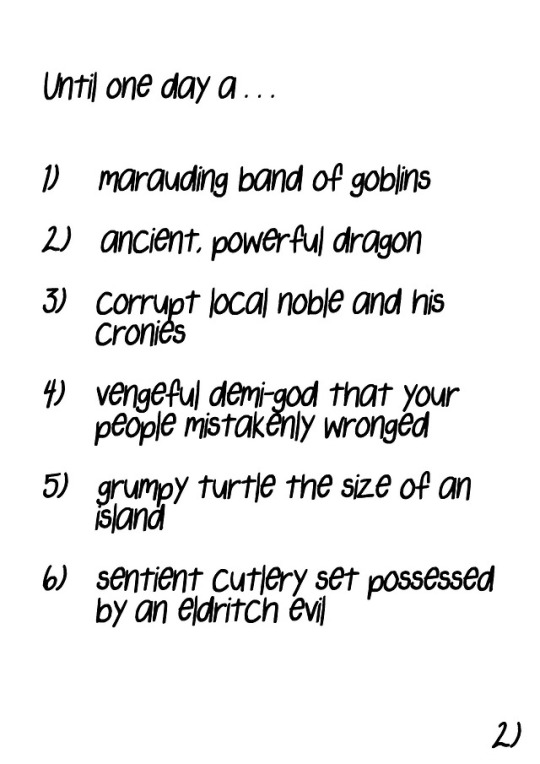
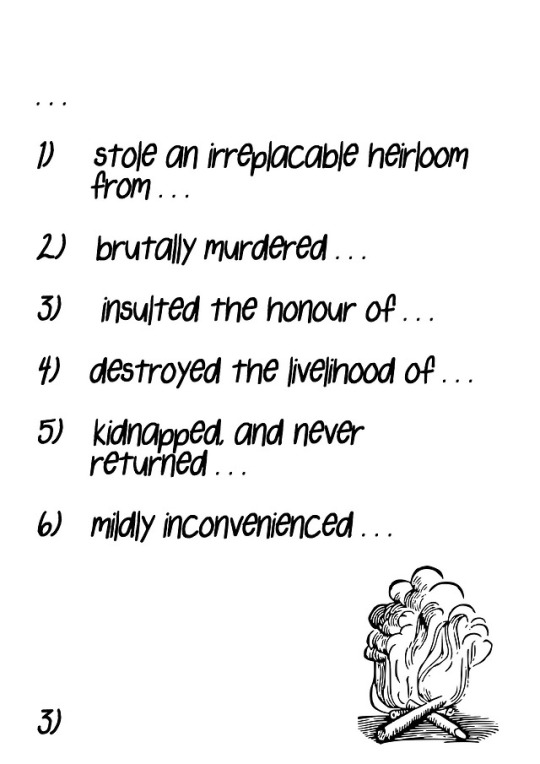


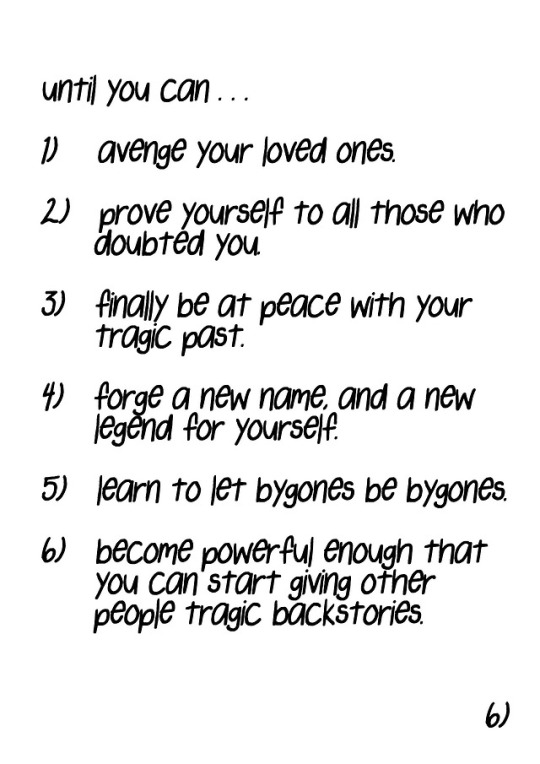
A quick little something I knocked together, the patented tragic backstory generator ™ is the easiest way to give your character a mythically horrible origin.
(actual tragedy may vary, results are final and non-negotiable, i am not responsible for any tears you may shed while imagining the sad life your character must have led up to this point)
39K notes
·
View notes
Text
Soulmate AUs
Imprint - the soulmate’s touch will leave an imprint on their skin, aka Destiel ‘grabbed you tight’
Sense8 - being telepathically connected to your soulmate no matter where in the world they are (and speaking and understanding their language)
Markings - a soulmate mark that only the soulmates have in common
Platonic soulmates - there are different types of soulmates, some are romantic, some are platonic, some are familial (x)
Tattoo - when they reach a certain age, a tattoo shows up on their bodies that they have in common
Eye-colour - only being able to see everything in the colour of their soulmate’s eyes
Grey to multi-coloured - only being able to see grey until they meet their soulmate
Sharing injuries - receiving the same injuries (to a lesser extent) that their soulmate suffers from
Empathy - sharing the same emotions as their soulmate when they are close by
Names - their soulmate’s name is written on their body (maybe only initials)
First Word - the first word/sentence they hear their soulmate say is written on their body
Timer - everyone has a timer that’s counting down till they meet their soulmate
Dreamy - seeing their soulmate’s dreams or being able to communicate with them in their dreams
Biggest secret - everyone knows their soulmate’s biggest secret (even if it’s from the future)
No harm done - soulmates are not able to hurt each other physically
Sharing songs - being able to share songs with their soulmate in their heads
Clock - everyone has a clock that shows the time zone their soulmate is in
Taste - only being able to taste anything after meeting their soulmate
Smell - being able to smell what their soulmate is smelling
Danger alert - people can feel when their soulmate is in danger
Tell no lie - it’s impossible to lie to your soulmate
Voice in their head - the voice in their head is their soulmate’s voice
Sharing birthdays - soulmates are born on the same day, share the first breath with each other
Tugging - being able to feel a tug in the direction of your soulmate if they are feeling a strong emotion
Different soulmates - people are not necessarily their soulmate’s soulmate
Specific scenarios:
First Word = the sentence that they will hear their soulmate say, is a very common saying or a catchphrase from a TV show
Sharing injuries = people hurting themselves in unique ways to find their soulmate is getting out of hand
Soulmate Trip = people are going on trips as soon as they are 18 to find their soulmate
TV shows/social media = it’s pretty popular to watch how people try to find their soulmates
Tell no lie = the soulmates meet in a situation where it’s very important to lie to each other
Shamefulness = their soulmate bond is not being seen as appropriate, for whatever reason
Defiance = not wanting to let fate run their lives, some people actively try to avoid meeting their soulmates
Sharing songs = they keep hearing songs that they can’t find on the internet, finally realizing that they are their soulmate’s own, unpublished songs
Sharing songs = they keep hearing songs that only become famous months later, finally realizing that their soulmate is involved in producing those popular songs
Danger alert = their soulmate is constantly in danger and as soon as they meet, they will have a word with them for worrying them so much
I hope you all enjoy the AU ideas :)
If you like my blog and want to support me, you can buy me a coffee! 🥰
6K notes
·
View notes
Text
Hurt/Comfort Prompts
Person A is feeling down and Person B does not like to see them this way, so they start to bring them food, a nice cup of tea and their favourite blanket.
Person A does not want to be alone right now, but they’re struggling with telling Person B that.
They haven’t seen each other in a long time, but Person A realizes they are still Person B’s emergency contact, when they get a call from the hospital.
Person A is having a panic attack and they desperately try to hide it, but Person B sees right through them and knows the right thing to do to calm A down.
Person A is sick and when they don’t answer their phone, Person B shows up at their front door with a concerned look and some soup.
After an emotionally and physically draining case at work, Person A wants to keep Person B close by, so that they can be there if Person B has a breakdown.
Person A is not the kind of person who goes to a friend to ask for help, but Person B knows them well enough to understand when the help is needed.
Person A knows that Person B will need more help, when they are ready for it, but for now they hope that holding them tightly and talking to them softly is a good start in the right direction
Person A got into a fight, even though Person B told them not to do it, but Person B still takes care of Person A afterwards.
Person A gets woken up by a scream and they quickly realize that Person B must be having a nightmare. They slowly wake them up, so they don’t get more scared and stay awake with them for as long as they need it.
If you like my blog and want to support me, you can buy me a coffee! 🥰
2K notes
·
View notes
Text
I know it’s really petty but if someone is doing a tiktok bit where they’re portraying multiple characters and they break the 180 rule I go absolutely feral
98K notes
·
View notes
Note
Do you have any advice on writing "found family" stories?
Hi :)
Undoubtedly one of the greatest tropes out there. So here is some infos and advice for writing it.
How to write found family
Why is it so good?
for readers: It shows that no matter who the characters are and where they come from, they can still become part of a family and be loved and cared for, and it connects the characters they love with each other
for writers: a great way to show different dynamics between characters inside the story, it adds layers to the character depending on which role they play in the family unit and what relationship they have to the other characters
types of families
blood family
adoptive family
friend group family
work family
family of circumstances
-----
blood-related family can also become chosen family, especially if just a small part of the family decides to stay together and part with the rest
adoptive family is always a chosen family, but one that’s also legally a family unit
friends as family or just going out and finding your own family and support system mostly goes hand-in-hand with problems or a split with their blood-related family, often found in the queer community
work family is something that is most seen in work-related TV shows, where people basically identify with their job and spend most of their day there with their team, a specific and committed group of people
family of circumstances means a group of people that did not search for each other but were thrown in together, often having to coexist together despite differences to accomplish a common goal, go on a journey together, a “us vs. them”-narrative that isolates them as a unit and pushes them closer together
How does it work?
mostly characters with absent or complicated families
having people that they can trust and that comfort them
stand in as their support system
having someone they can depend on and be vulnerable with
going through the highs and lows together
long term this gives more safety and security than friendships and romances do
often having the structure of a typical nuclear family with specific roles the characters fill
but basically, everything goes that has the components of a family unit
can start with 2 or 3 people and go up
smaller groups will be closer and more intimate with each other
works especially well for characters of different age groups
romance inside a (overall platonic) found family is fine, still works when there is a non-romantic familial relationship between them and other members
>> Found Family Prompts
I hope you write some wonderful stories with this trope!
- Jana
2K notes
·
View notes
Video
161K notes
·
View notes
Text
Masterpost: How to write a story?
Compilation of writing advice for some aspects of the writing process.
How to motivate myself to write more
How to get rid of writer’s block
Basic Overview: How to write a story
How to create a character
How to make a character unique
How to write conversation
Introducing a group of characters
Large cast of characters interacting in one scene
Redemption arc
Plot twists
How to write a summary
How to write romance
How to write emotional scenes
How to write yelling
Fatal Character Flaws
How to use songs in a fanfiction
Good traits gone bad
More specific scenarios
Slow burn
How to create quick chemistry
How to write a bilingual character
How to write a polyamorous realtionship
How to create and write a cult
Criminal past comes to light
Reasons for breaking up while still loving each other
Forbidden love
Date gone wrong
Causes for the apocalypse
How to create a coffee shop atmosphere
How to write enemies to lovers
How to write lovers to enemies to lovers
Arranged matrimony for royalty
Paramilitary Forces/ Militia
Honeymoon
Academic Rivals to Lovers
Love Language - Showing, not telling
How to write amnesia
AU ideas
Favourite tropes
Inconvenient things a ghost could do
Milestones in a relationship
How to write age difference
Platonic activities for friends
Introducing partner(s) to family
Writing a stratocracy
Reasons a couple would divorce on good terms
Love Language - Showing you care
If you like my blog and want to support me, you can buy me a coffee! 🥰
36K notes
·
View notes
Text
Watch "Previously on PBFB..." on YouTube
youtube
1 note
·
View note




